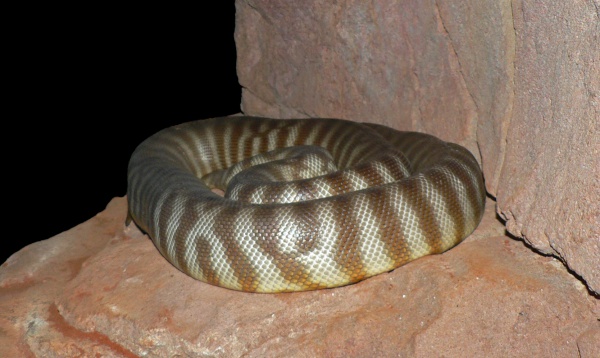Facts About Woma python
The woma python, also known as Ramsay's python, sand python, or simply woma, is a captivating snake species native to Australia. Once abundant in Western Australia, it has unfortunately become critically endangered in certain regions. This species was first described by William John Macleay in 1882, and its name honors the Australian zoologist Edward Pierson Ramsay. The woma python is one of two species in the Aspidites genus, often referred to as "pitless pythons" due to their lack of heat-sensing pits.
Adult woma pythons typically reach a length of about 1.5 meters (around 5 feet). They possess a narrow head, small eyes, and a broad, somewhat flattened body. Their dorsal scales are small and smooth, and their coloration can range from pale brown to nearly black, often featuring striped or brindled patterns. These pythons bear a strong resemblance to another species in their genus, Aspidites melanocephalus. Woma pythons can be found in Western and central Australia, including regions such as Southwest Australia.
Despite their declining populations in some areas, the woma python is listed as Least Concern on the IUCN Red List. Conservation efforts, including captive breeding programs, are underway to help protect this species. Woma pythons are primarily nocturnal hunters, preying on terrestrial vertebrates such as small mammals, ground birds, and lizards. They are oviparous, meaning females lay eggs, typically between 5 and 20 per clutch. In captivity, woma pythons are known for their activity and docility, making them popular pets among reptile enthusiasts.
